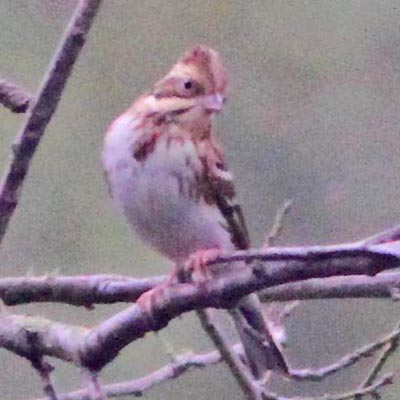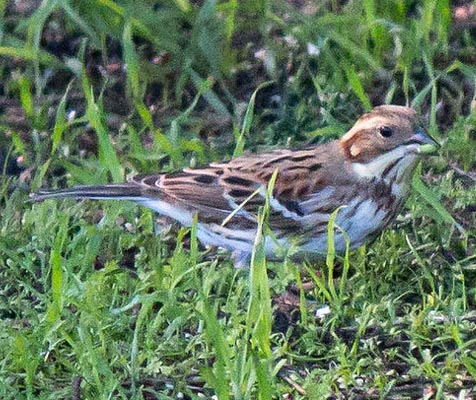| |
OLD WORLD BUNTINGS Emberizidae
|
|
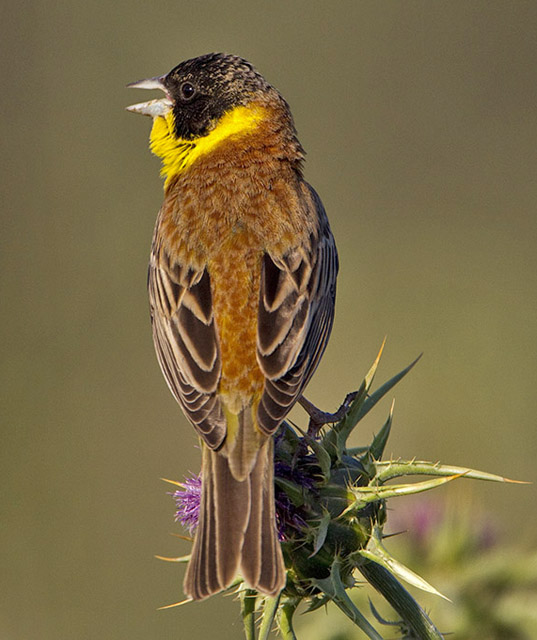 Traditionally,
the Old World buntings and the New World sparrows were combined to form
the Emberizidae, a large family of seedeaters found throughout much of
the temperate zones of the world. Barker et al. (2013) published a
multilocus phylogenetic analysis of the nine-primaried passerine
radiation in the New World, and among their findings was the fact that
Old World buntings and the New World sparrows diverged about 12-13
million years ago. To retain familiar families such as the New World
warblers and New World blackbirds as monophyletic families, the old
Emberizidae must be split from the evolutionary line leading to today's
New World sparrows. Accordingly, the newly slimmed-down Emberizidae
includes just the Old World buntings. Where once there were over 150
emberizids (or more — see Rising 2011, discussed below), now there are
just 44 species. Traditionally,
the Old World buntings and the New World sparrows were combined to form
the Emberizidae, a large family of seedeaters found throughout much of
the temperate zones of the world. Barker et al. (2013) published a
multilocus phylogenetic analysis of the nine-primaried passerine
radiation in the New World, and among their findings was the fact that
Old World buntings and the New World sparrows diverged about 12-13
million years ago. To retain familiar families such as the New World
warblers and New World blackbirds as monophyletic families, the old
Emberizidae must be split from the evolutionary line leading to today's
New World sparrows. Accordingly, the newly slimmed-down Emberizidae
includes just the Old World buntings. Where once there were over 150
emberizids (or more — see Rising 2011, discussed below), now there are
just 44 species.
This is a singing male Black-headed Bunting
(left, in a gorgeous shot from Greece by Graham Catley). Its breeding
range ranges from eastern Italy to the Middle East, and it winters
primarily in India. Records of vagrants occur to western Europe, north
Africa, and southeast Asia.
Graham Catley also obtained this dramatic view of a male Cretzschmar's Bunting
on Lesvos, Greece (below). It has a very localized breeding range
around the eastern Mediterranean, and winters primarily in Sudan. |
|
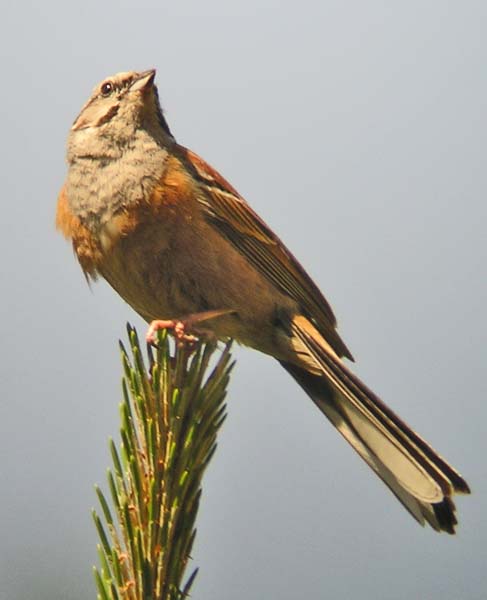 A full set of Old World buntings fill many niches in Eurasia. Godlewski's Bunting (right) breeds in brushy, rocky habitat, often adjacent to forest (this one is using a short fir as a song post). The colorful Yellow-throated Bunting
(just below) has two disjunct populations in east Asia, where it breeds
in foothill deciduous woods: the one in the northeast winters in Japan
(a fairly short distance migration) and the central China population
appears to simply move downslope in winter. A full set of Old World buntings fill many niches in Eurasia. Godlewski's Bunting (right) breeds in brushy, rocky habitat, often adjacent to forest (this one is using a short fir as a song post). The colorful Yellow-throated Bunting
(just below) has two disjunct populations in east Asia, where it breeds
in foothill deciduous woods: the one in the northeast winters in Japan
(a fairly short distance migration) and the central China population
appears to simply move downslope in winter.

The endangered Jankowski's Bunting
(below) is now restricted to remnant grasslands in northeastern China
(the old "Manchuria"), where it prefers sand dunes overgrown with very
short scrub. |
|
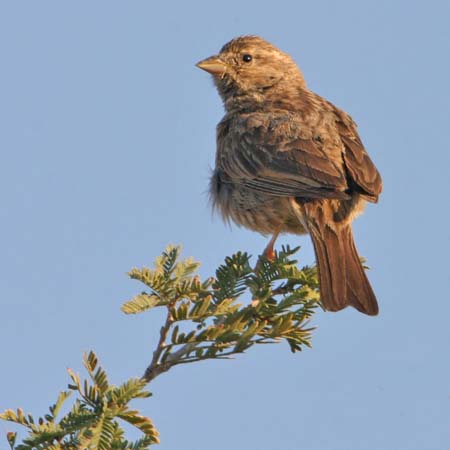 Africa has its own set of buntings, including Lark-like Bunting,
an irruptive and nomadic bird of southern Africa (left). While
Lark-like Bunting retains its drab plumage throughout the year, many
migratory Eurasian species molt out of bright alternate dress after
breeding, and are found in migration and winter in dull colors, making
many of them difficult to identify and the subject of identification
papers. Africa has its own set of buntings, including Lark-like Bunting,
an irruptive and nomadic bird of southern Africa (left). While
Lark-like Bunting retains its drab plumage throughout the year, many
migratory Eurasian species molt out of bright alternate dress after
breeding, and are found in migration and winter in dull colors, making
many of them difficult to identify and the subject of identification
papers.
Among the emberizids, the longer-distance
migrants have been found as vagrants far from their usual routes. A
number of eastern buntings have been recorded in western Europe, and
some have also turned up in western North America, including Little Emberiza pusilla, Rustic E. rustica, Reed E. schoeniclus, and Pallas's E. pallasi. Little and Rustic have made it to California; the other two were recorded in Alaska.
This young Rustic Bunting
(below) wintered in Golden Gate Park, San Francisco, California, from
December 2014 through March 2015 [photo left by D. Roberson, photo
right by Carole Rose]. |
|
| |
Photos: Graham Catley photographed the male Black-headed Bunting Emberiza melanocephala and the male Cretzschmar's Bunting Emberiza caesia on the island of Lesvos, Greece, on 27 May 2010. The Yellow-throated Bunting Emberiza elegans was at Foping Nature Reserve, Shaanxi, China, on 13 Nov 2010. The Godlewski's Bunting E. godlewskii was at Wulinghshan, Hebei, China, on 8 June 2004. The Jankowski's (or Chestnut-backed) Bunting E. jankowski was north of Baichengzhi, Jilin, China, on 12 June 2004. The Lark-like Bunting E. impetuani was near Brandvlei, South Africa, on 7 July 2005. The vagrant Rustic Bunting E. rustica
was in Golden Gate Park, San Francisco, California, photographed on 14
Dec 2014 (D. Roberson) and 25 Dec 2014, the latter by Carole Rose.
Uncredited photos © Don Roberson. Credited photos © Graham Catley and © Carole Rose, as credited, and used with permission; all rights reserved.
Bibliographic note: There is no "family book" that covers all of the Emberizidae but the Handbook of the Birds of the World
account (Rising 2011) did so, in a very expansive Emberizidae (326
species!) that included many groups (including many finches and
seedeaters) now more properly placed among tanagers [Thraupidae]. This account is full of wonderful photos. Further, the following book was aimed at the more traditional view of this family:
Byers, Clive, Jon Curson, and Urban Olsson. 1995. Sparrows and Buntings. 
This
book is structured like a standard "family book" of the period, with
color plates in front and text in back. The odd subtitle is "A Guide to the Sparrows and Buntings of North America and the World."
I say "odd" since "buntings of North America" are not covered (e.g.,
Indigo Bunting et al.). Rather, the subtitle should have been "Guide to Nearctic Sparrows and Palearctic Buntings."
The buntings of the Old World are all included, but the only
Neotropical sparrows are of Nearctic genera. Also included are
longspurs and Snow Bunting, now assigned to a separate family. The maps
are in the text, not with the plates. The plates are okay, and quite
nice for a quick look-through of sparrows and buntings, but do not
really look like the birds I know, such as California Towhee. Worse,
the attempt to show geographic variation in Fox Sparrow and Song
Sparrow does not match the subspecies attempted, except in the most
basic way. The text is also okay, but not thorough, and did not really
cover the difficult i.d. points in North America. As the authors are
all European, I assume that the text on Old World birds is much better.
Literature cited:
Barker,
F.K., K.J. Burns, J. Klicka, S.M. Lanyon, and I.J. Lovette. 2013. Going
to extremes: contrasting rates of diversification in a recent radiation
of New World passerine birds. Syst. Biol. 62: 298–320.
Byers,
C., J. Curson, and U. Olsson. 1995. Sparrows and Buntings: A Guide to
the Sparrows and Buntings of North America and the World. Houghton
Mifflin, Boston.
Rising, J.D. 2010. Family Emberizidae (Buntings and New World Sparrows), pp. 428 –683 in
Handbook of the Birds of the World (del Hoyo, J., A. Elliott, J.
Sargatal & D.A. Christie, eds). Vol. 16. Lynx Edicions, Barcelona,
Spain.
|
|
|

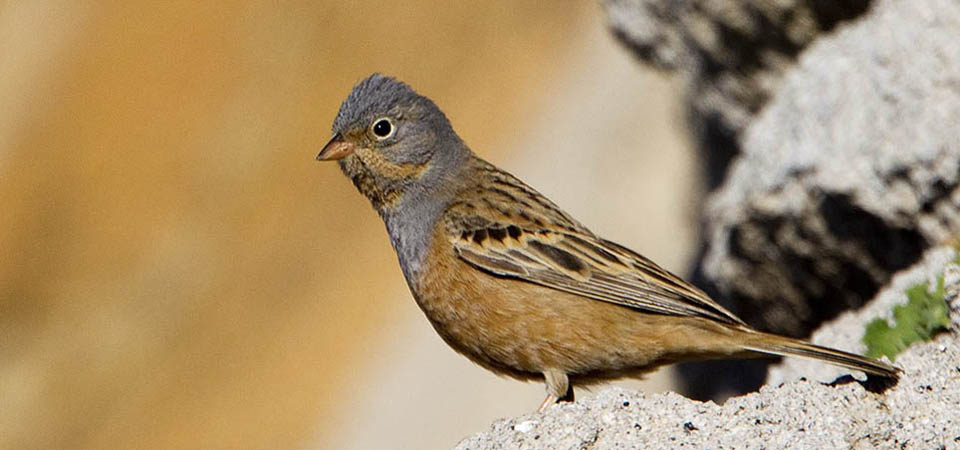
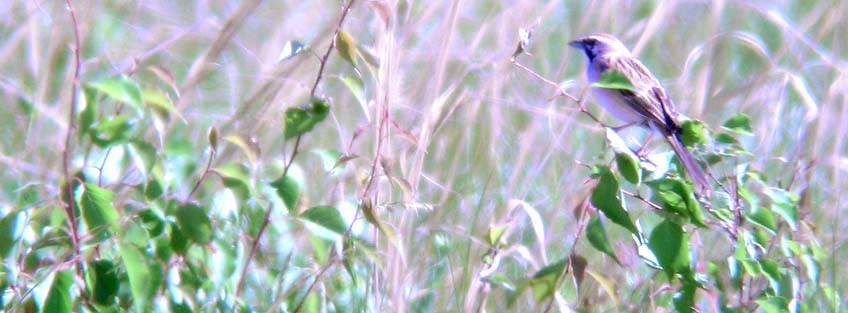
 Traditionally,
the Old World buntings and the New World sparrows were combined to form
the Emberizidae, a large family of seedeaters found throughout much of
the temperate zones of the world. Barker et al. (2013) published a
multilocus phylogenetic analysis of the nine-primaried passerine
radiation in the New World, and among their findings was the fact that
Old World buntings and the New World sparrows diverged about 12-13
million years ago. To retain familiar families such as the New World
warblers and New World blackbirds as monophyletic families, the old
Emberizidae must be split from the evolutionary line leading to today's
New World sparrows. Accordingly, the newly slimmed-down Emberizidae
includes just the Old World buntings. Where once there were over 150
emberizids (or more — see Rising 2011, discussed below), now there are
just 44 species.
Traditionally,
the Old World buntings and the New World sparrows were combined to form
the Emberizidae, a large family of seedeaters found throughout much of
the temperate zones of the world. Barker et al. (2013) published a
multilocus phylogenetic analysis of the nine-primaried passerine
radiation in the New World, and among their findings was the fact that
Old World buntings and the New World sparrows diverged about 12-13
million years ago. To retain familiar families such as the New World
warblers and New World blackbirds as monophyletic families, the old
Emberizidae must be split from the evolutionary line leading to today's
New World sparrows. Accordingly, the newly slimmed-down Emberizidae
includes just the Old World buntings. Where once there were over 150
emberizids (or more — see Rising 2011, discussed below), now there are
just 44 species. A full set of Old World buntings fill many niches in Eurasia. Godlewski's Bunting (right) breeds in brushy, rocky habitat, often adjacent to forest (this one is using a short fir as a song post). The colorful Yellow-throated Bunting
(just below) has two disjunct populations in east Asia, where it breeds
in foothill deciduous woods: the one in the northeast winters in Japan
(a fairly short distance migration) and the central China population
appears to simply move downslope in winter.
A full set of Old World buntings fill many niches in Eurasia. Godlewski's Bunting (right) breeds in brushy, rocky habitat, often adjacent to forest (this one is using a short fir as a song post). The colorful Yellow-throated Bunting
(just below) has two disjunct populations in east Asia, where it breeds
in foothill deciduous woods: the one in the northeast winters in Japan
(a fairly short distance migration) and the central China population
appears to simply move downslope in winter. 
 Africa has its own set of buntings, including Lark-like Bunting,
an irruptive and nomadic bird of southern Africa (left). While
Lark-like Bunting retains its drab plumage throughout the year, many
migratory Eurasian species molt out of bright alternate dress after
breeding, and are found in migration and winter in dull colors, making
many of them difficult to identify and the subject of identification
papers.
Africa has its own set of buntings, including Lark-like Bunting,
an irruptive and nomadic bird of southern Africa (left). While
Lark-like Bunting retains its drab plumage throughout the year, many
migratory Eurasian species molt out of bright alternate dress after
breeding, and are found in migration and winter in dull colors, making
many of them difficult to identify and the subject of identification
papers. 